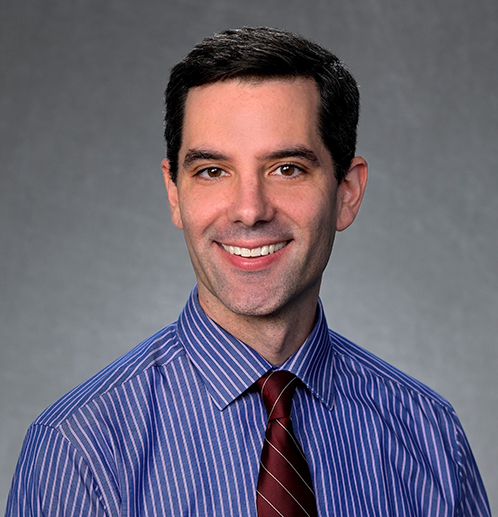About the PI


David Merrick, MD/PhD completed undergraduate studies at the Johns Hopkins University, then earned his MD and PhD at Yale University in the laboratory of Dr. Michael Caplan. During his graduate training he studied the molecular dynamics of PKD1, the protein mutated in Autosomal Dominant Polycystic Kidney Disease (ADPKD). Targeted capture of the cleaved intracellular signaling domain of this large ciliary membrane protein revealed that it translocated to the nucleus and regulated the activity of the Wnt and CHOP signaling pathways via interactions with a transcriptional co-activator p300. As part of this work, he developed a 3D-organoid culturing system that facilitate the in vitro manipulation of kidney cysts, as well as adapting a zebrafish model of ADPKD to study the in vivo role the PDK1 signaling domain. Subsequent investigations revealed an interaction between PKD1 and TAZ1 to regulate skeletogenesis.
Following his PhD studies, Dr. Merrick completed a residency in internal medicine and a clinical fellowship in endocrinology at the University of Pennsylvania before joining the laboratory of Dr. Patrick Seale for postdoctoral study. In the Seale lab he utilized single-cell RNA-transcriptomics to uncover several novel subpopulations of mesenchymal progenitor cells and delineated the lineage relationships between these cells. Using CRISPR microinjection techniques he has developed numerous mouse models to facilitate in vivo lineage tracing of these novel populations to discover their role in adipose tissue development and fibrosis. He has authored publications in high-profile journals such as Science.
In 2019, Dr. Merrick, under the mentorship of Dr. Patrick Seale, was awarded a Career Development Award from the NIDDK to investigate the role of mesenchymal progenitor cells in adipose tissue health.
On July 1, 2020, Dr. Merrick was appointed as an Assistant Professor of Medicine in the Perelman School of Medicine, Division of Endocrinology at the University of Pennsylvania.

